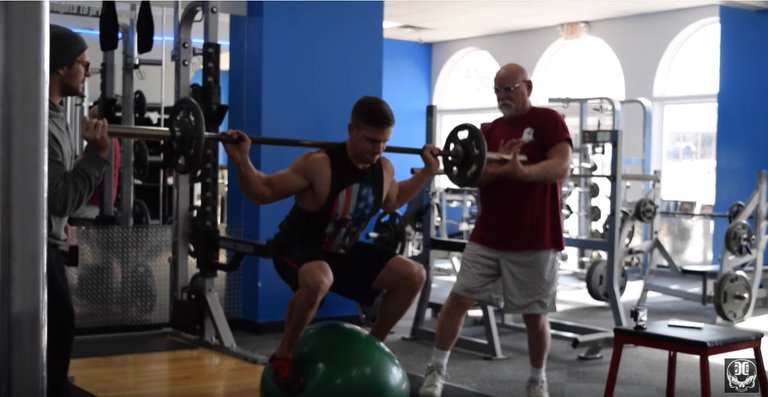Worst Strength and Lifting Exercises: Avoid these Like the Plague
Countless articles and videos about the best strength exercises litter the internettywebs, so even the novice-est of novice lifters isn’t without guidance provided they simply spread their research across a few different sources and scrape the cream off the crop of information they find.
However, there are some less-than-stellar exercises out there that are sometimes recommended, even actively pushed by PTs onto their clients. I’m not talking about the ridiculous barbell-squat-on-a-medicine-ball either. I’m talking plausible-sounding exercises that are either unnecessary, unnecessarily risky, or ones that simply have better alternatives you should be doing. This short article hopes to guide you in the right direction, by guiding you away from these bad, ineffective, and often downright silly exercises.
Sumo Deadlift High-Pull
The SDHP is an unbelievably silly movement. I mean, leaving aside the fact that a standard sumo deadlift isn’t really a real deadlift (sorry powerlifters, but then again, I’m not sorry - fight me), taking a sumo stance and a narrow-ish grip to hoist the bar to your chin is, well, silly.
The upright barbell row gets similar kind of stick (as it should) for a shared danger here: shoulder impingement. Throw in the fact that the SDHP isn’t really a functional movement (unless you’re training to do… SDHPs), and you’ve got a black hole of gains, at the event horizon of which is waiting a physiotherapist to take all your money.
Dumbell Flyes
I’m not saying the chest fly isn’t a good movement to build muscle in certain hard-to-target areas of the chest. However, if you look at the dumbbell fly, not only does the movement lose most tension on the target muscle (i.e. the chest) towards the top, it also places your shoulders in a mightily compromised position.
Properly executed, the seated chest fly is more effectively performed with cables, since as least you’re getting tension on the chest throughout the movement.
Behind-the-Neck Presses
Behind-the-neck pressing certainly works your shoulders a decent amount. However, so does a standard-position barbell overhead press. The latter, with proper form, allows the shoulder to work within the intended range of motion for the ball-and-socket joint setup. However, behind-the-neck pressing (and pulling, for that matter) takes the shoulders outside of their natural plane of motion.
That isn’t to say that the more mobile people out there don’t or won’t benefit from behind-the-neck presses, and plenty of supporting articles like this one like to tout its legitimacy. However, for beginners and for anyone that lacks the proper mobility in the shoulder girdle, the injury risk outweighs the benefits. Stick to standard strict pressing in front of the neck.
Poorly-Executed Good Mornings
I myself have good mornings with great success. They are excellent at strengthening the lower back, as well as the glutes and hamstrings. These benefits come with a caveat, however: some people lack the proper form and the thoracic mobility to perform them without putting themselves at serious risk of injury.
Improper thoracic extension can lead to sub-optimal transfer of force and at worst can lead to not reaping the benefits of the exercise, and at worst can put some serious strain on the lower back and lead to injury.
Leg Extensions
While leg extensions have helped bodybuilders add some extra size to their quads, this movement is one of the least natural planes of motion out there. As Jeff Cavaliere says in this video, the movement isn’t functional, it puts a lot of shear force on the knees, and the alternatives out there are endless. Squats, lunges, and Bulgarian splits are better at packing mass onto the quads, and these come with much less risk of injuring the knee over time.
